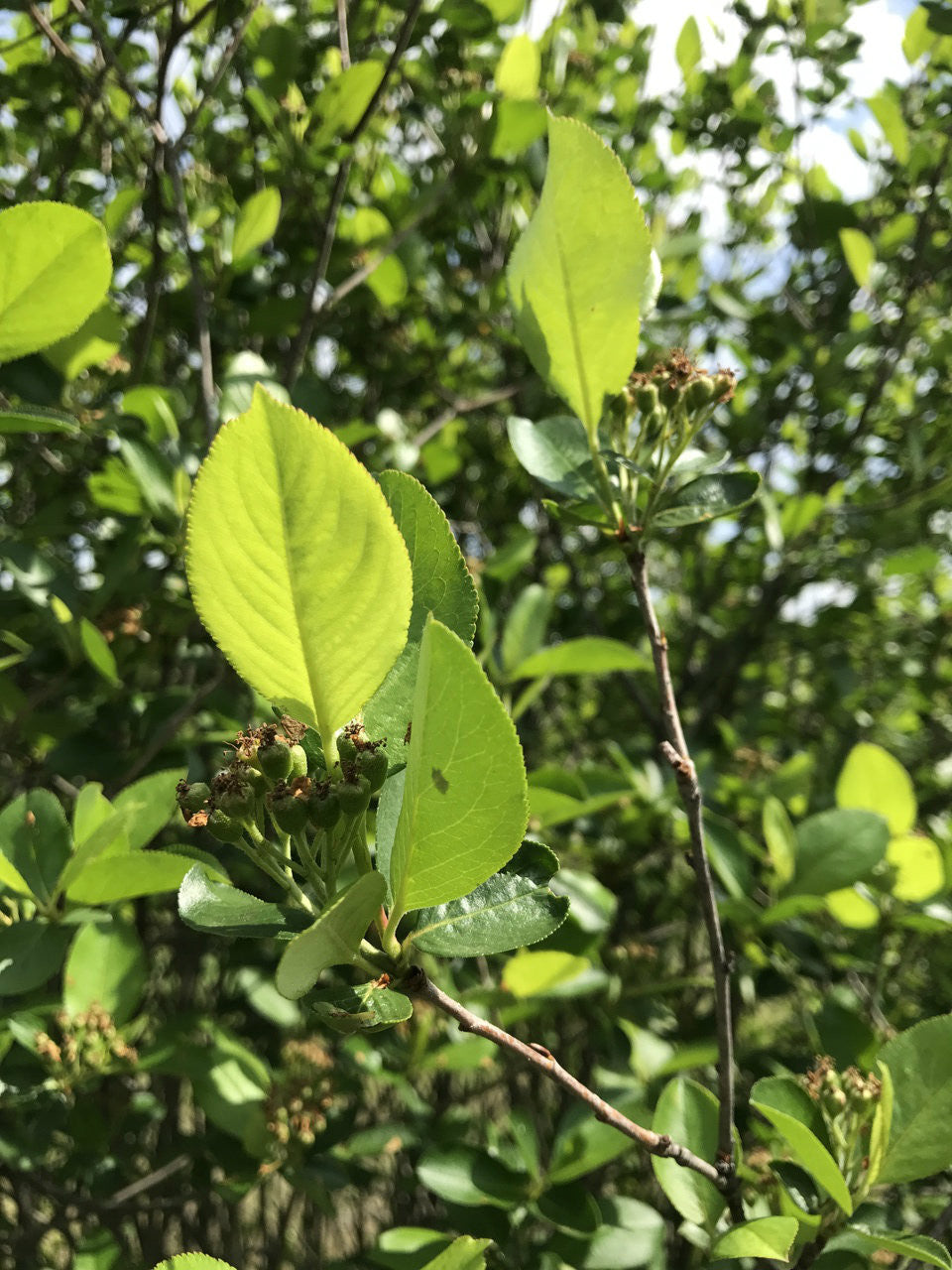Bareroot Plant Material
Black Chokeberry
Black Chokeberry
Couldn't load pickup availability
25 plants per unit
Aronia melanocarpa, or Black chokeberry is a deciduous shrub native to the Midwestern and Northeastern United States. Although Kansas is slightly west of its black chokeberry's native range, the plant's adaptability and beneficial qualities make it a good fit for conservation plantings in the eastern half of the state.
Leaves, Stems and Fruit
The leaves of black chokeberry are oval shaped, approximately 4" long, 2" across, finely toothed, medium green and without hairs. The leaves turn a glossy green during mid summer and a nice deep red color in the fall. The flowers are white, 5-petaled and occur in aggregates called cymes in groups of approximately 10-12 flowers. The flowers develop and are pollinated in the spring which then develop into dark purplish fruit in late summer that can persist on the plants late into the winter. The juice from the fruit is very dark and the fruits contain several seeds in each pome.
Use
Wildlife- Native bees utilize the pollen and nectar from this plant in the springtime and several butterfly and moth species which use the foliage for food during their larval phase. Various bird species consume the fruit, in addition to foxes and squirrels. The fruit is edible to humans although quite bitter, and can be processed into jams or syrups.
Adaptation and Soil
Black chokeberry is adapted to full sun conditions, although it can survive in partial shade. While it is not known for it's extreme drought tolerance it can survive moderate drought, and tolerate a range of soil moisture conditions (tolerates flooding quite well). Over time, it can spread laterally via root suckering.
Spacing
Chokeberry plants reach sizes of 6-8' tall and wide, so shrubs should be spaced approximately 6' apart.
Culture
One-year-old bareroot seedlings (12-24"inches tall) are sold for conservation plantings. During the establishment period, supplemental watering and control of competing vegetation will aid survival and early growth.
Pests
There are no significant pests or diseases that impact black chokeberry



